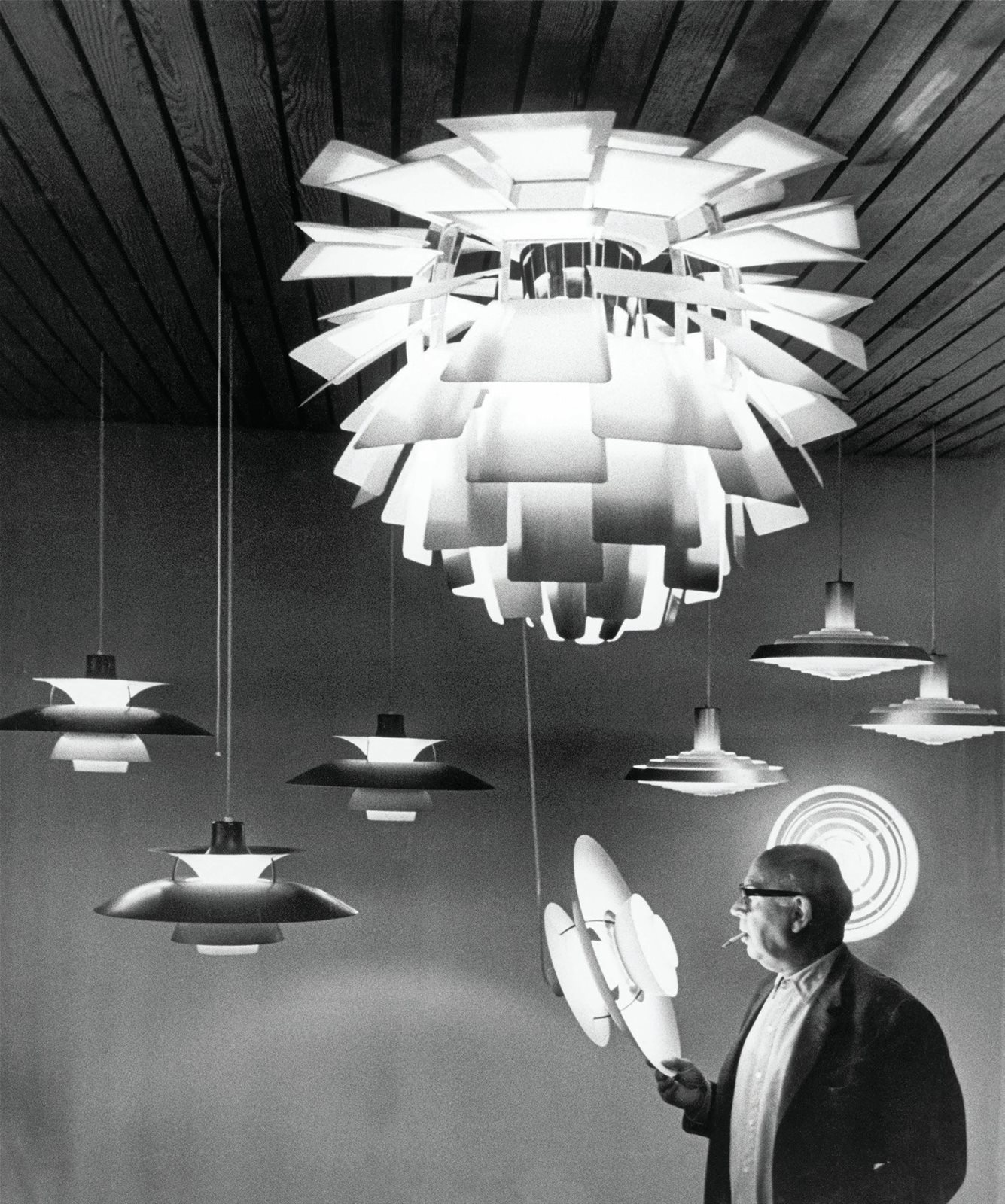
POUL HENNINGSEN’S PIONEERING WORK FOCUSED ON THE RELATIONSHIP BETWEEN LIGHT, SHADOWS, GLARE AND COLOR REPRODUCTION, CREATING THE MOST ICONIC LIGHT FIXTURES IN MID CENTURY MODERN DESIGN.
Photography courtesy of Louis Poulsen
POUL HENNINGSEN (1894–1967) was a Danish designer, architect and cultural critic whose groundbreaking work in lighting remains iconic. Born in Copenhagen to renowned writers Agnes Henningsen and Carl Ewald, Henningsen grew up an intellectual, shaping his creative and critical approach to design. Initially trained as a functionalist architect, Henningsen shifted his focus to lighting in the 1920s.
In 1924, Henningsen began his lifelong collaboration with the Danish lighting company Louis Poulsen. His most famous design, the PH lamp series, was introduced in 1926. These lamps featured a revolutionary three-shade system that diffused light evenly and reduced glare, creating a soft, comfortable light ideal for homes and public spaces. The PH lamps became symbols of Danish Modernism, emphasizing functionality, affordability and elegance.